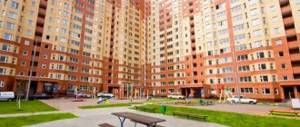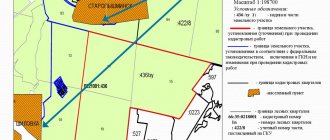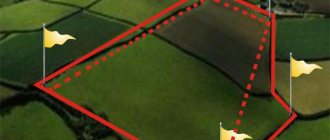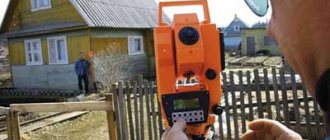Legal regulation of neighbor relations: current norms and draft laws
The laws governing neighbor relations include:
- Land Code (since many issues related to the use of one’s own and a neighbor’s land often result in disputes that are resolved even before going to court);
- Town Planning Code (since quite often it is necessary to resolve the issue of the rules for the location of various structures on sites so as not to violate established sanitary standards);
- Federal Law No. 498-FZ “On the Responsible Treatment of Animals and on Amendments to Certain Legislative Acts of the Russian Federation” (since pets are often kept on summer cottages or in private houses to meet the needs of the owner of such a plot or house or that circle of people who live on such plots and in such houses, for example, chickens, ducks, pigs, etc. Keeping such animals, especially noisy ones or from which a smell spreads, on private territory, not equated to a farm, often causes a huge number of disputes between neighbors );
- Federal Law No. 217-FZ “On the conduct of gardening and horticulture by citizens for their own needs and on amendments to certain legislative acts of the Russian Federation”;
- Civil Code, in particular: Art. 262 on access to land plots; Art. 271 on the right to use the site by its owner; Art. 274-275 on easement of land; Art. 301 on reclaiming property from someone who is not the owner; Art. 304 on the protection of infringed rights not related to deprivation of possession.
From January 1, 2024, changes to the Civil Code are planned to come into force, according to which a new branch will appear in Russian law - neighbor law.
Today, neighbor law in Russia as an industry is not yet very developed, and the main regulation of any controversial issues occurs either in various state and municipal bodies that have the authority to take such actions, or in the courts, where resolution takes place using the norms of the current legislation, and the decisions taken are binding.
Basic requirements for a fence
In 2011, the legislation on construction was supplemented by a decree according to which even the maximum height of 150 cm (the generally accepted norm) is not considered legal if the rule of opacity to air or light is violated. It also applies to individual housing construction (private sector), but deviations may again be allowed if the other party to the agreement has no objections and is ready to confirm its consent in writing.
At the same time, the front fence does not have such restrictions; its maximum height is not limited in order to protect the household from attacks by intruders from a city street or driveway in the village. However, it must be taken into account that:
- GOST puts forward requirements for fences according to the material of manufacture (brick or corrugated board), safety precautions when working at height, as well as taking precautions when working with different types of building materials;
- 5 meters is the most optimal parameter for a perimeter fence - it allows you to jump over in case of emergency, but protects access to your neighbor’s land under normal conditions;
- the intended purpose governs the placement of part of the fence - on the facade, between plots, on the back side or along the road, the location of the house on the edge of a populated area;
- one of the main points is the territorial affiliation of the land plot (the charters of partnerships or dacha cooperatives may allow deviations from the norms);
- the height may be prohibited or permitted on the basis of sanitary and hygienic, fire safety rules or public safety standards.
Cottage community
The installation of a fence may be dictated by the terrain (non-standard slope, windy side, requiring additional protective measures during installation) or climate conditions. This is especially true for the now popular profiled sheet, which can give a sailing effect and create an additional threat of destruction (and therefore a danger to others).
Federal laws do not regulate the maximum permissible height of a street fence, as long as safety regulations are followed. The only thing that needs to be observed in an individual structure is the distance from the gate or gate to the roadway of at least 2 meters 50 centimeters. Otherwise, you need to build in such a way that the opening occurs inward, onto the local area.
SP 53.13330.2011 (SNiP 30-02-97)
The Decree of the State Construction Committee dated September 10, 1997 approved SNiP 30-02-97 (SP 53.13330.2011), which, as of 2021, is considered valid with minor changes. This set of rules regulates the planning and development of horticultural areas and is advisory in nature.
If earlier, before the changes were made, SNiP established the height of the fence between neighbors in the form of nets (lattices) for the purpose of minimal shading - 1.5 meters, then according to the 2021 standards, recommendations in terms of fences remained - in the form of nets (chain-link). The requirements for fence height are no longer specified in SNiP. However, this does not mean that any fence can be erected to keep neighbors away.
In addition to the recommendations of SNiP, there are charters of gardening partnerships, as well as local acts of local authorities. These documents are already prescriptive in nature.
Local administrative acts, statutes
Often, SNT, ONT, villages, cottage communities in their local charters and acts are based on generally accepted urban planning norms and rules. These local regulations cover the use of public areas and also establish procedures for the installation of fences bordering the road and between adjacent properties.
Most often, the SNT Charter establishes the following standards:
- The fence from neighbors must be made of translucent material (chain-link mesh);
- The height of the fence between neighbors should not exceed 1.8 meters.
By written mutual consent of the owners of adjacent plots, a fence of a different height and configuration can be installed.
When purchasing a plot of land, before erecting a fence, ask how high the fence should be according to the rules established by internal regulations.
How high should the fence be?
The main purpose of a fence on a plot of land is to preserve personal space and protect the territory from prying eyes. Therefore, installing a fence is of particular importance. However, even such an insignificant building has its own regulatory regulation. To avoid wasting money, it is advisable to go through the preparation process in advance. Let's consider the installation rules and the height of the fence between neighbors in a private house according to the law.
Also on the topic: Is it possible to privatize emergency housing?
Federal legislation does not regulate the maximum height of fencing on a land plot. This standard is established by SNiP of 2011.
However, neighbors have the right to independently determine the size of the fence between their properties. To formalize the result, it is advisable to enter into a written agreement.
Permitted maximum height for a fence on a land plot in SNT or for individual housing construction:
- from the side of an alley or street - no more than 2.2 m;
- between neighbors - no more than 1.5 m (transparent) or 0.75 (solid);
- from the neighbors - no more than 1.5 m (hedge).
However, these standards are advisory in nature. The issue must be considered multilaterally.
When installing the fence, you must consider:
- purpose of the land plot (individual housing construction, SNT, dacha cooperative, city limits);
- purpose of the fence (fence from the side of the street, alley, neighbors);
- norms of local acts of the cooperative, SNT;
- the material from which the fence is made (a fence made of corrugated sheets or polycarbonate, picket fence or brick);
- material safety;
- manufacturing method (with foundation, strip).
Nuances
If you want to separate from the outside world, you should not forget about the basic rules of land use. A fence made of profiled sheets must be equipped with ventilation holes along its perimeter. They should be located at a level of 15 centimeters from the soil. This will protect the soil and buildings from the subsequent growth of mold fungi and rotting.
Don't forget about your neighbors. All buildings and structures built, even by mutual agreement and secured by an act of approval, must have a pitched roof. Its direction must be carried out towards your site. Otherwise, the adjacent plot will be flooded with rainwater and melting snow masses.
In addition, the choice of material for fencing should be made based on the size of the plot. By installing a light-tight fence in a small area, you can destroy not only your crop, but also your neighbor’s.
Another tip when building a fence between neighbors will be the SNT Charter. Such local regulations often contain additional information and recommendations for installing fencing in a specific area.
Installation Rules
Let's look at how to properly install a fence on a plot of land. In order not to create problems for yourself, it is advisable to approach this issue as responsibly as possible.
Procedure:
1. Coordination. At the first stage, you need to agree on the boundaries of your site with your neighbors. Otherwise, your neighbors may claim part of your land. This will lead to lengthy legal proceedings. And as a result of satisfying the neighbor’s claim. The fence will have to be demolished or moved. Therefore, the question of installing a fence should be raised only after land surveying.
2. Determination of parameters. The fence must comply with SNiP and the requirements of the local administration. It is necessary to determine the height and transparency of the fence. If the chosen option does not comply with the law, then it is necessary to prepare a written agreement with each of the neighbors.
Important! If one of the plots has several owners, then the agreement must reflect the positions of each of them.
3. Obtaining official permission. When erecting a fence that does not comply with established standards, it is necessary to obtain the consent of the local administration. This issue must be resolved in a declarative manner. The owner applies to the architecture department with an application and a package of documents. Information is reviewed within 30 days. Consent is given in writing.
No. List of documents to apply to the architecture department
| 1 | Title documents for the site |
| 2 | Cadastral passport and boundary plan |
| 3 | Act of approval of allotment boundaries |
| 4 | Act of approval of fencing parameters |
Important! The application must include information about why you need a fence that does not comply with the law. For example, if the owner breeds bees, then a solid fence 200 cm high can be installed.
Ways to build a fence between areas of the required type
The new federal law on fences provides additional conditions for demarcating small areas. In the previous edition, it was still possible to build a fence that was permeable to air and light, while avoiding any complaints.
The law being discussed by legislators since 2021 leaves no discrepancies - one and a half meters, or even better - a meter, and the structure must certainly be mesh. Fencing cannot be installed higher without proper approvals.
This is motivated not only by compliance with housing standards in very limited areas, but also by fire requirements and rules. The main method recommended in such cases is to reach a mutual agreement with a neighbor. All this applies to the Moscow and Leningrad regions (MO and LO), Moscow, St. Petersburg and all other regions of Russia, be it cities, villages or rural settlements.
But if the relationship doesn’t work out, you shouldn’t despair; there are several other methods for creating a solid fence:
- install a mesh structure of the required height and make it impenetrable to prying eyes (the Internet is replete with similar methods - from embroidery with old threads to camouflage mesh and threading plastic slats);
- establish at least one hive on the site - bees are subject to the apiary law, and this makes it possible to build a structure of the required height;
- resort to constructing a low solid fence, and build up the rest of the part with transparent material that transmits light and reflects prying eyes (such materials are already on sale, but this is not a cheap pleasure);
- Moving exactly one meter away from the demarcation boundary (but not a centimeter less), you can build a fence of any configuration and degree of impenetrability (the ban on a solid fence only applies to one that runs exactly along the demarcation boundary, but on your own site you can do the same).
Layout of buildings in SNT and individual housing construction according to the law in 2019-2020.
The last technique has been tested several times, and there is documentary evidence of this. Low, meter high, installed on the boundary, this is a signal one. With its help, you can insure yourself against bad neighbors if they decide to seize what they think is free territory.
A few nuances
If you keep all the payment documents from the company that will supply the building materials and take photographs of the second blind fence, which is everywhere at least a meter apart, the court upholds its construction. Disputes may arise over the fact that the fence damages the plantings in the neighbor's garden. In this case, you can demand an examination - it is not cheap, and the neighbors will pay for it - the losing party is guaranteed.
The need to build a blind fence often arises when the plantings are constantly being grazed by neighbor's livestock, or by the walks of a dog that has chosen someone else's garden as a hunting ground. If pets are large, then it will not be difficult for them to jump over a low fence. True, cats can also penetrate through the roof, where they get through the balcony, but this is no longer so dangerous for crops.
What to do in case of violations by a neighbor
The height of the fence between neighboring areas must be observed by law. The courts are considering a huge number of precedents with violations, especially if the person on the other side of the fence has recently moved and completely ignores the requirements of the rules. Therefore, the new version of the law seemed to be a necessary measure back in 2021, although it only came into force in January 2021.
To date, the new law remains relevant.
When considering a claim in court, you can now refer not only to existing regulations, but also to a new edition that has legal force. Although for several years now, the court has been taking into account the standards and requirements of SNiP and SP, SanPiN and fire safety.
Also on the topic: How to privatize an apartment: step-by-step instructions
Country fence between neighbors
The main goal that this quintessence of practical experience sets for itself is to ensure the safety of people, prevent access by strangers, as well as intruders and animals, guaranteed respect for the rights of the owner, which is ensured by Article 304 of the Civil Code of the Russian Federation. According to this article, the owner can demand the restoration of his legal rights guaranteed by ownership documents.
Who should replace the fence?
But even the erected fence will not last forever. Sooner or later the question of replacing it arises. Who should pay for fencing replacement? Nobody.
The law does not oblige land owners to install a fence and does not regulate which of them should monitor its safety and change it. Therefore, neighbors’ demands to repair or replace the fence can be ignored. And if a neighbor starts making threats, then you need to contact the local police officer.
If chickens, ducks, goats and other animals come from neighbors without a fence, you also need to contact the local police officer. The law holds pet and bird owners responsible for causing damage to someone else's property.
Which neighbor should put up a fence and on which side?
As for the construction of a fence as a solution to a technical problem, the most optimal option is to jointly carry out this type of construction work with those neighbors with whom the need arose to erect such a structure. For example, you can jointly purchase material and hire workers, or carry out installation together (if there are sufficient capabilities both from the technical side and from the labor side). Then it will be easier to determine who owns it if such a dispute suddenly arises, and the fence itself turns out to be located on the border of the plots.
As for the installation of the fence itself, from the point of view of addressing the neighbors on the front or back side, everything is decided at the discretion of the one who installs this fence, or on the basis of an agreement between neighbors.
In a similar way, the question of who should install a fence and on which side of their plot is resolved, since this issue is not regulated by regulations.
Are you looking forward to the amendments to the Civil Code on neighbor's rights coming into force? Yes - at least let's stop arguing with our neighbors over the barbecue that I grill on my property! Most likely yes, because at least a little bit of it will be possible to put in their place those who have a mesh fence between sections interferes. No, the amendments will not change anything - everything will remain the same, because people have a quarrelsome character. I don’t expect it. My disputes with my neighbors are eternal and only the court will resolve them. I’m happy with everything anyway, because I have an enviably excellent relationship with my neighbors.
Responsibility for violating the rules
The law establishes liability for the construction of a fence that does not comply with the standards:
- The owner did not agree on the boundaries between neighbors. A person whose rights have been violated may go to court to restore their rights. In this case, the fence will be required to be moved, which is fraught with additional costs.
- The owner did not agree on the fencing parameters. If the fence is not transparent enough and casts a shadow on the neighbors’ territory, then the court may order it to be demolished.
- The owner of the site did not approve the construction of the fence. Such an object may be recognized as an unauthorized construction. As a result, it will not only have to be demolished, but also have to pay a fine in the amount established by the local administration.
Fence height standards
Free consultation with a lawyer on the division of property in drawing up an agreement, preparing a claim, changing the size of shares, etc.
GOST does not prohibit the owner from making a reliable façade fence that serves as the boundary between a city or rural street along which the road runs. At the same time, sufficient clearance must be provided for the passage of cars and the movement of pedestrians.
Most often, the SNT Charter establishes the following standards:
- The fence from neighbors must be made of translucent material (chain-link mesh);
- The height of the fence between neighbors should not exceed 1.8 meters.
It is possible to attach closely to the fence only if there is mutual interlocking. This is how a barn (if it is not a chicken coop) or a garage can be built. When constructing an object, the correct slope of the roof must be selected and ventilation must be properly equipped.
If the new owner decides to dismantle the fence himself, then he can be held liable for damage to property. In this case, the violator will be obliged not only to pay for the damage, but also to restore the fence.
If you violate them, then there is a high probability that you will be forced to bring everything back to normal, even demolish the built house. So it is better to first get advice from representatives of the fire department on how and in what way to build a fence.
The metal is resistant to changes in temperature and humidity; it is powder coated in the color of your choice or primed. Here you need to approach the issue from the position of where the fence will be installed. That is, it is the private sector within a city, village, other locality, or it is a gardening non-profit partnership.
Dispute Resolution Methods
Resolution of disputes arising between neighbors can be carried out in several ways - on the basis of an attempt at a peaceful settlement or by applying the norms of the current legislation, including on the basis of an appeal to the authorized state bodies.
Peace negotiations
Peaceful negotiations can be used if the conflict between the parties has not developed into a phase of active opposition, and all disputes can be resolved by signing a special agreement in front of witnesses, stipulating all controversial issues that have arisen. Thus, the method of peaceful settlement can be applied to those cases when it comes to the need to establish a procedure for handling fruits and berries that fall from one area to another from fruit trees and shrubs.
Actions according to the law
If the dispute cannot be resolved through a peaceful settlement, you can use the methods provided for by current legislation.
If a dispute has arisen between the owners of plots in a gardening or dacha partnership, you can first contact the board of such a partnership or its administration in order to achieve a solution without going to the authorized state or judicial bodies. For private houses with attached plots, such an appeal occurs to the administration of the municipality where the controversial situations are located.
If for some reason the dispute at the administration or board level has not been resolved, the dispute resolution is completed by going to court. A court decision is binding.
In the event that the neighbor who lost the dispute does not comply with the court decision, he may be subject to recovery as part of enforcement proceedings.
Permitted fence height - how to resolve disputes with neighbors
If a dispute does arise over the height or material of the fence, to resolve it you must:
- Try to resolve the dispute peacefully, come to a mutual agreement and jointly solve the problem, because whatever one may say, one way or another you will still have to communicate with your neighbors.
- When it is not possible to resolve the issue amicably and the neighbors do not make contact, then we proceed to the next step - we look for internal documents, contact the chairman of the SNT, or the local administration to resolve the dispute. The appeal can be either oral or written. We ask for assistance from local authorities.
- If appeals to local authorities do not produce results, the court remains. However, before contacting the judicial authorities, you should carefully prepare, collect the evidence base so that the given arguments for making a decision are on your side, because most of the provisions of the set of rules are advisory in nature, and the SNT Charter may not stipulate clear rules on the height of fences between neighbors.
Also on the topic: How to get a larger apartment when a five-story building is demolished under the renovation program in Moscow?
Lawyer's answers to private questions
— A young family lives next door. The fence between my house and my neighbor's house fell. The neighbor yells at me to fix it with my own money. But I am a pensioner and I don’t have that kind of money. Am I required to restore the fence at my own expense?
— If the fence fell due to natural wear and tear, then no. And if the cause was your actions or the actions of your pets, then you must.
— I want to make a brick fence, 2 meters high. How can I find out if such a structure can be built in the private sector?
— This issue is regulated by local legislation. Write an appeal to the district administration website. They are required to provide an explanation in writing.
— The neighbor built a solid fence, higher than 2.5 meters. It shades half of the garden, and my plants have begun to rot. How can one oblige him to dismantle the fence?
- Go to court. You just need to first collect evidence that the fence was erected with violations. If this is a solid fence, then it should be located no less than 1 meter deep into the neighbor’s property.
Arbitrage practice
As judicial practice shows, citizens who go to court with a claim to dismantle a high fence argue that this is a violation of insolation (illumination of the area by sunlight) and natural ventilation. But in 2021, there is no regulatory framework that regulates the standards of these indicators. Therefore, the plaintiffs are denied.
To challenge a structure, it is better to resort to building codes. Calculate the distance of the fence to the boundary, conduct a construction examination (if the fence contributes to the accumulation of snow and rainwater on the site, which negatively affects buildings).
Another popular reason for refusing to satisfy a claim is the plaintiff’s abuse of his right to defense. In accordance with Art. 10 of the Civil Code of the Russian Federation, you cannot exercise your civil rights if your only goal is to harm another citizen. Therefore, if the plaintiff does not prove that the fence really interferes, the court will refuse to satisfy the claim.
Fire protection when installing fences
In both cases, if your fence shades your neighbor's property or house or interferes with the ventilation of the area, then he will have the right to seek protection in court.
In 2011, the legislation on construction was supplemented by a decree according to which even the maximum height of 150 cm (the generally accepted norm) is not considered legal if the rule of opacity to air or light is violated.
And they, in turn, are based on the terrain where the houses are built, and on the climatic conditions of the region.
Free consultation with a lawyer on a marriage contract on drafting, execution, amendment, division of property, etc.
What can you do on your property and in your home so as not to violate anyone’s rights?
The rights of neighbors are a category that those who purchase any real estate have to constantly think about compliance with. It is a mistake to think that when purchasing a summer cottage or a private house with an attached plot, some responsibility is removed. The main rule that must be observed by people living in summer cottages (in country houses), as well as in private houses, is to use owned land exclusively according to the law. This means that industrial production, for example, a sawmill, cannot be organized on a plot located in a dacha community.
You must not engage in any noisy work that may cause inconvenience to neighbors. So, if you organize a car service on a site next to a private house, this can also be regarded as a violation of the law not only regarding compliance with the requirements for permitted land use, but also with respect to compliance with sanitary legislation: exhaust from constantly approaching cars can significantly worsen the environmental situation in neighboring areas, which can be proven by conducting a special environmental assessment.
When performing any work that may affect the interests of neighbors, it is necessary to notify them of such work, and also (in the case of work that may cause special inconvenience) obtain consent for its implementation. For example, if, due to the formation of an additional well, a neighbor’s well with “technical” water may temporarily become shallow, it will be necessary to obtain consent for such formation of a new source of fresh water, even if the shallowing occurs for a short period of time.
What to do if a neighbor put up a fence
A popular situation is to install a fence in a public area. This situation does not always violate the rights of neighbors. But the fact of violation is counted regardless of whether the rights of neighbors were violated.
Example . Vasilina planted a front garden next to her plot. She fenced him and her land with a common fence. Although the fence did not interfere with other neighbors, during the inspection, administration officials issued a fine for trespassing. The woman tried to challenge the administrative violation report in court. However, the court confirmed the powers of the municipality employees.
Thus, erecting a fence on public territory is a violation of the law. This is considered a seizure of municipal land. Since all public lands, by default, are municipal property.
If such actions of neighbors lead to a violation of the rights of other residents, the citizen has the right to initiate an inspection by the authorized bodies. If a violation is discovered, the culprit will be held accountable.
If the culprit does not eliminate the violation on time, the fine will be issued again.







